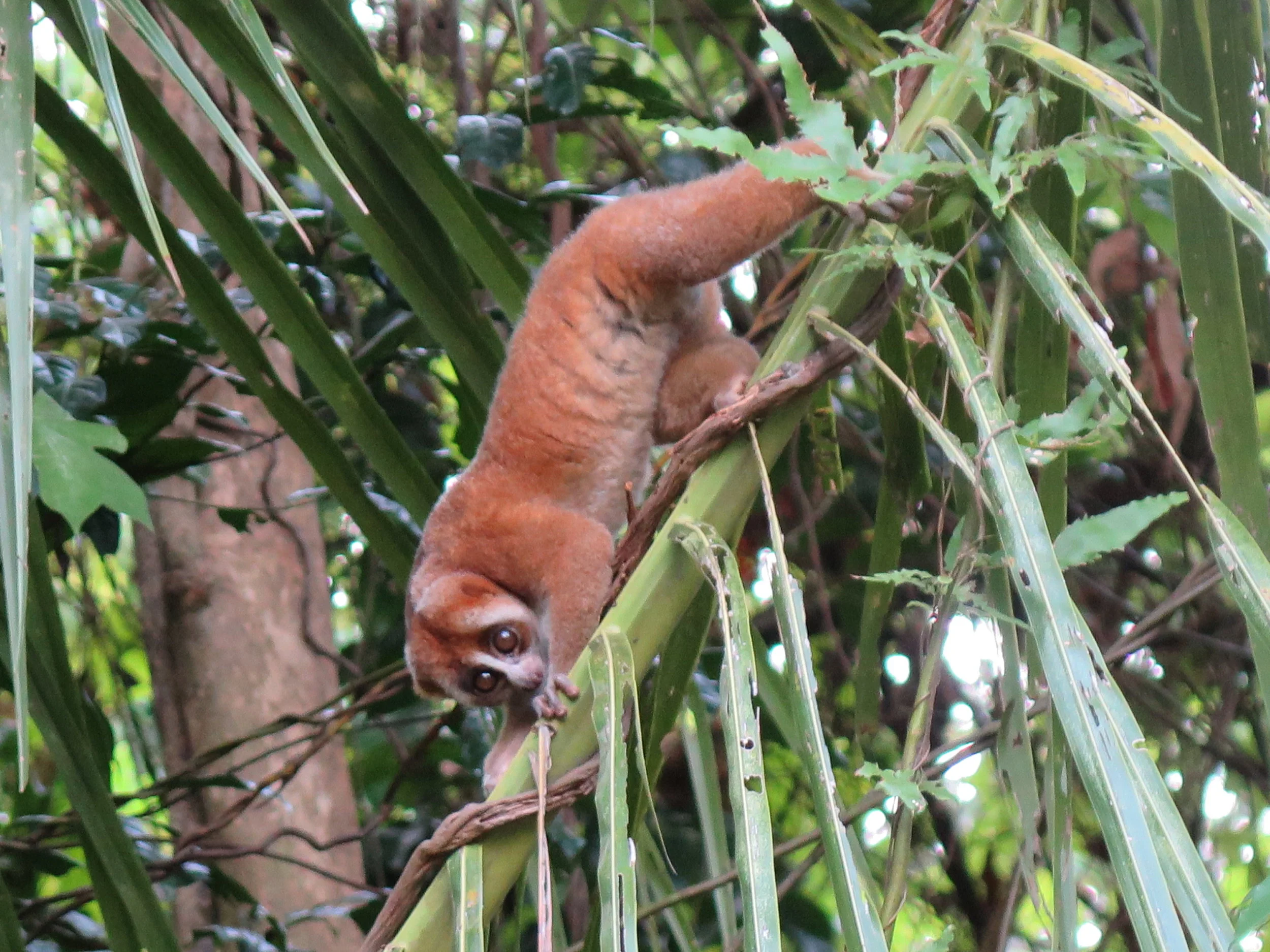For the past few weeks, our Ecofieldtrips staff have been busy on trips to Tioman Island, Malaysia. During this time the staff have had the opportunity to explore many of the amazing and interesting wildlife on the island. After these long weeks, one of our newest staff members, Rory Thomson, had some time to sit down and reflect on the experience of spotting one particularly cool primate:
Pulau Tioman is the largest island on the east coast of Peninsular Malaysia, at a size of 13,360 hectares. Tioman is home to a variety of marine and terrestrial flora and fauna, including 45 species of mammals and 25 species of snake, which EFT staff and students are able to explore during trips. On our most recent trips to Tioman we were lucky to see the Sunda, or Greater, slow loris (Nycticebus coucang) not once but twice!
The IUCN have listed the species as vulnerable with decreasing population sizes due to threats such as logging, hunting and pet trades. Due to their cute large eyes and sluggish behavior, lorises have become stars on Youtube, which then has fueled the pet trade. In Asia, many tourist traps have lorises on display so tourists can take pictures with them. The lorises have their teeth removed and their large eyes used for seeing in the dark are subjected to bright flashes from cameras.
The Sunda slow loris is a solitary primate, although they have been seen to socialise with other individuals who have overlapping home ranges. Despite its cute appearance, slow lorises have actually been shown to be venomous. Slow loris species can activate their venom by combining the oil from their brachial arm gland with saliva – so essentially licking their armpits! This can be used as a method of killing prey such as small mammals and as a defence against parasites.
On Tioman, we spotted the first loris by a trash pile and were wondering why they would live there. Upon further observation we noticed that the lorises were actually catching and eating insects that were hovering around the trash! So, as you can imagine we were very excited to see this amazing species during our stay in Tioman!
References:
Abdul, J., 1999. An Introduction to Pulau Tioman. The Raffles Bulletin of Zoology. 6, 3-4.
IUCN, 2019. The IUCN Red List of Threatened Species. Version 2019-2. Available at: https://www.iucnredlist.org Date accessed: 25th September 2019
Nekaris, K.A., Moore, R.S., Rode, E.J. & Fry, B.G., 2013. Mad, bad and dangerous to know: the biochemistry, ecology and evolution of slow loris venom. Journal of Venomous animals and Toxins including Tropical Diseases. 19(21)
Wiens, F. & Zitzmann, A., 2003. Social structure of the solitary slow loris Nycticebus coucang (Lorisidae). Journal of Zoology. 261, 35-46.



